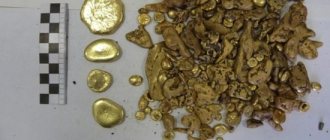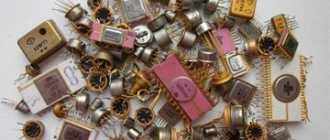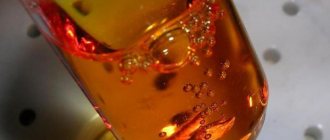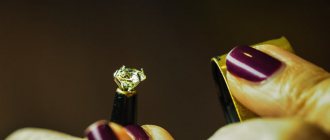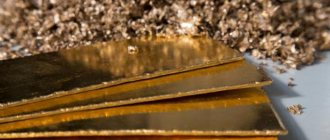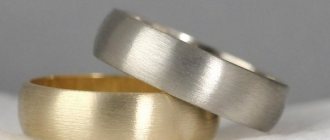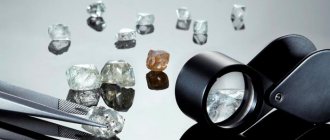Everyone knows that gold can be obtained from radio components and computer chips. There are rumors that mobile phones contain gold, and quite a lot of it. How much of it is there really and how profitable can such an activity as mining gold from mobile phones be?
In Japan, they determined that 280 g of gold can be extracted from a ton of cell phones. For comparison: even for the richest ore, this figure does not exceed 5. However, to extract such gold you will need some reagents, as well as knowledge and skills in the field of chemistry.
Precious metals in a mobile phone
There is an opinion that older phones contain more precious metals. Is this true or not? It's difficult to figure it out. But the fact that their content differs in different models is true. The fact is that gold has the properties of inertness, thermal conductivity, electrical conductivity and other characteristics useful in radio engineering. Gold, along with silver, palladium and platinum, is often used to coat chip pads and other elements where good contact is required that will not deteriorate over time due to metal oxidation.
Metal content in mobile phone
Almost any device will contain non-ferrous, precious metals, ceramics and other elements. Previously, old microcircuits and devices contained a lot of them, but now, thanks to new technologies, their quantity is small. Including mobile phones.
Most of all, a mobile phone contains copper - approximately 8.5 g, but in some devices its number can reach 15 g. It also contains about 3 g of cobalt. About 0.25 g of silver can be extracted from the phone, and only 0.024 g of gold. And these 24 mg are not contained in one place, but are distributed over contacts and wire tracks as a coating with a minimum thickness. Thus, the gold in one mobile phone is approximately 1-2 dollars.
Let's not forget about platinum and palladium. There is less than a milligram of them, but such metals have the highest cost. If you collect all the metal, the amount will be about $2.
But SIM cards contain a considerable amount of gold. They cover the contact area. Some amateur gold miners claim that up to half a gram of gold can be extracted from one SIM card.
Printers
This type of office equipment, from a profitability point of view, is the most unprofitable investment .
Of course, this equipment also contains precious metals.
In particular, gold-plated contacts of the print head and cartridges.
Copiers - photosensitive elements - are coated with noble metal.
However, the amount of precious metals in printers is so negligible that “the game is not worth the candle.” For example, foreign equipment in this category contains 0.01 g of gold and 0.8 g of silver. A domestically produced product, model CM6329 02M, boasts only 0.01 g of “yellow” metal.
Where to look for it?
So, we figured it out - cell phones contain precious metals. But in order to find them, you need to know where to look. Gold in the phone can be:
- on old mobile phones you can try looking for gold on the button contacts;
- very often there is a lot of gold on the contact pads of microcircuits;
- somewhat less of this precious metal can be found inside the microcircuits themselves;
- a lot of it is found on the coatings of the contacts of cables and coaxial antennas;
- According to some reports, gold can also be extracted from speakers and microphones.
Tape recorders and radios
These units, produced in the Union, also had elements containing precious metals in their designs.
The most valuable items
in tape recorders :
- “black” microcircuits in a plastic shell (174un7 and other parts);
- powerful transistors marked KT802 and similar elements - KT814, KT503, KT203, KT3102;
- “yellow” chips located in the indicator controller.
Such elements are found in the legendary Mayak tape recorder of the 80s, as well as in devices similar to it .
In tape recorders, precious metals can also be contained in capacitors, relays, switches, and other elements; noble metals in radiols are contained in capacitors.
In addition, silver contacts of range switches are often found. Let us consider in the table the content of valuable elements in some tape recorders.
| Model | Au | Ag | Pt | Pd |
| Electronics-004K | 1,04 | 6,319 | 0,0705 | 0,1067 |
| Sonata | 0,3129 | 0,6072 | 0,001 | 0,0035 |
| Mayak-233 stereo | 0,1853 | 0,96935 | 0 | 0 |
| Legend-404 | 0,688 | 0,0632 | 0,001 | 0,0042 |
| Belarus-302 | 0,0308 | 0,2174 | 0,001 | 0,1493 |
How to mine?
Let us describe one of the methods of gold mining. For extraction you will need two reagents - hydrochloric acid and hydrogen peroxide.
Acid and peroxide are mixed in a ratio of 2 to 1. The acid is poured into hydrogen peroxide, and not vice versa. During work you need to be careful, use protection and perform all manipulations in the air.
We take all the parts of the mobile phone that contain gold and cut off all the excess. Throw it all into the mixture and, stirring daily, wait a week. After which small particles of gold precipitate. We filter it using filter paper.
You won't be able to get rich this way. In order to extract gold from a cell phone, more complex and expensive methods will be needed. It is not economically viable to mine gold from mobile phones at home, unless you do it on an industrial scale. And besides, no one has repealed the law on illegal trafficking in precious metals.
Refrigerators
It doesn’t matter whether the household unit was manufactured in the Union or has been released from the assembly line at the present time, all refrigerators, or rather thermostats, have silver contacts, as well as soldering with PSR solder.
Consider the most popular brands :
- Nord-155 contains 0.0012 g Au and 6.21 g Ag;
- The Smolensk brand refrigerator can boast the same amount of precious metals;
- Mir-101-1 – 3.177 g Ag;
- Minsk-126 – 2.38 g Ag;
- Zyl - 1.326 g of the same metal;
- Don – 1.8 g Ag.
In general, it is also quite meager . Whether it’s televisions or high-precision equipment, not to mention equipment intended for the military-industrial complex of the USSR.
What is refining?
The widespread use of gold in industry has also led to negative consequences: there are fans of extracting metal from old microcircuits, that is, carrying out refining.
Refining is the process of obtaining pure precious metals by releasing them from a mixture. This method of obtaining gold from old electronics is also available at home.
How to carry out this refining? In words, everything is quite simple. If you read the reviews, you can understand that everything is not entirely simple. First, you need to find out which microcircuits contain gold.
Everyone knows that gold can be obtained from radio components and computer chips. There are rumors that mobile phones contain gold, and quite a lot of it. How much of it is there really and how profitable can such an activity as mining gold from mobile phones be?
In Japan, they determined that 280 g of gold can be extracted from a ton of cell phones. For comparison: even for the richest ore, this figure does not exceed 5. However, to extract such gold you will need some reagents, as well as knowledge and skills in the field of chemistry.
A week after the start of the experiment
So, a little over a week has passed and we can finish the gold mining experiment. If the parts were selected correctly, then at the bottom of the jar you will notice fragments of gold extracted from these parts. But almost no one has checked how much gold can be mined by digging through a mobile phone. But if a small amount comes out of a whole computer, then a couple of grains can come out of a much smaller phone.
Now you need to “pull” the gold out of the acid. The easiest way is to use a paper filter (for filtering coffee). But you can also use a towel as a filter, but you should not clean gold grains from the fabric with your hands; you can disrupt the already soft structure of the metal, turning it into dust. The best solution would be to wash off the gold with vodka into a test tube or sealed container.
In connection with the spread of such methods of mining the yellow metal, some gold miners want to know how much gold is in mobile SIM cards. It all depends on the specific sample, but in general the amount of gold does not exceed a few hundredths of a gram, although some craftsmen write that they managed to extract 0.5 grams of metal from a SIM card.
We extracted gold from computer circuit boards, but it is worth remembering that each part has its own specific preparation before extraction and the composition of the solution, so if you are not a chemist, then work with gold extraction very carefully, observing all safety measures.
USSR TVs
This gadget was previously released in two versions
: tube device and transistor device.
It makes no sense to buy tube TVs, since precious metals are contained in these devices only in the beam tetrode - the largest lamp marked 6P36S, 6P44S, 6P45S, GU50.
Another thing is transistor TVs. There is an abundance of precious metals here.
Buyers are interested in the following elements
Any product is subject to thorough inspection, since products of this type, produced in the Union, were distinguished by a variety of model ranges
In addition, one device could have different configurations, both containing precious metals and not using them.
We bring to your attention a table that shows which USSR TVs contain valuable elements and how many there are. The mass of precious metals in one product is given in grams.
If we compare the content of precious metals in Soviet TVs “Horizon”, “Vityaz”, etc. with imported ones, it is worth noting that a device manufactured in Japanese and Chinese, Taiwanese or Korean assembly contains only 0.1474 g of gold and 2.4859 g of silver.
Old electronics - your personal gold reserve / Server Mall corporate blog / Habr
As the volume of information processed by companies grows, server parks also grow. All this abundance of large equipment becomes obsolete over time, written off and... often thrown away or idle as dead weight in warehouses. However, servers, like any electronics, contain a large amount of harmful substances, so they must be properly recycled. It would seem that this is a rather boring and costly task, but if you approach it wisely, you can mine gold from old servers. Literally. And not only of them.
It's no secret that a wide variety of metals are used in the production of electronics. And that includes gold. It is believed that one metric ton of electronic waste contains from 250 to 450 grams. And more and more enthusiasts do not throw away outdated and broken gadgets, but accumulate them for the subsequent extraction of valuable metals. Of course, the specific share of gold and platinum in a laptop or server is small, but by recycling several dozen old gadgets thrown away as unnecessary, you can collect the same gold into a quite good ingot, the cost of which will outweigh your efforts.
In addition to gold, copper, from which traces of printed circuit boards are made, is of a certain value. By the way, this metal is one of the reasons for the theft of air conditioners that use copper tubes in the heat exchanger. A lot of copper can also be extracted from power supplies.
If you have already grabbed a screwdriver and are greedily looking at the old system units dumped in the closet, then do not forget that electronics also contain a lot of substances harmful to health. For example, picture tubes on televisions and monitors will “delight” your body with lead, barium and strontium. But in general, an ordinary smartphone contains almost a third of the periodic table.
The chemicals used to extract metals are also far from safe. For example, aqua regia, a mixture of concentrated nitric and hydrochloric acids, can be used to dissolve gold and platinum. So, reliable body protection, glasses, a high-quality respirator and a well-ventilated room are absolutely necessary conditions when extracting precious metals from electronics.
Where are the most valuable metals?
The main places on computers and servers where precious metals are concentrated are: motherboards, processors, memory modules, expansion cards and gold-plated cable plugs. Let's take, for example, a motherboard and an expansion card:
A - Inside the north and south bridges there are the finest gold wires, as well as gold-plated paths connecting different levels of the board. B — Gold-plated connector contacts. C - Gold-plated contacts of memory and PCI slots. D - Integrated boards may contain very thin gold wires. E - Monolithic ceramic capacitors (SMD, Surface mount device) may contain palladium, and in some cases, also silver.
The gold-plated contacts, visible to the naked eye, require no explanation.
It makes sense to go to your friends and acquaintances, collect their old computers, broken phones, broken tablets, non-working laptops, old Soviet tape recorders, radios, televisions. System administrators whose companies are updating their server fleet and decommissioning equipment will be especially lucky: ancient servers are a rich source of gold-containing components.
: the older the gadget, the higher its content of precious metals. There is especially a lot of gold and silver in electronics from 1940-60.
How does industrial metal processing and gold mining take place?
On an industrial scale, when processing old equipment (not just computer processors), the same procedure (refining) is used using acids and sodium sulfide. After the entire chemical procedure, gold has formed in the tank, which needs to be filtered. A filter is connected to the system, through which all impurities except gold sand are removed.
At a temperature of 200 degrees, gold sand is heated in a drying chamber. After 2 hours it can be melted.
If you hand over your computer for industrial recycling in order to get rich from the extracted precious metal, you cannot count on big earnings.
In total, when disassembling two computer processors: several small grains of yellow metal, selling which, at best, you can get 2 dollars in profit.
You can earn much more by selling a non-working processor unit as scrap metal.
Methods for extracting precious metals from mobile phones
You can find devices either at home, as well as from friends and acquaintances, or advertise the purchase of old models. Moreover, non-working devices will do. Since the presence of gold is really not a myth, you can start extracting it and visually find out how much gold is contained there. First you need to disassemble the phone. The battery does not matter in this matter; it must be disposed of or used for other purposes.
Cellular device parts are cleaned using strong reagents, and future gold goes through the purification stages of dissolution and precipitation. Or the galvanization method is used, in which the gold is separated under the action of electrodes. The second method is more effective, faster and safer, but galvanization is an expensive process, unlike the use of reagents.
Not only ordinary people and those who want to earn money, but also scientists are engaged in mining gold from phones. They are the ones who fight for a clean environment, and it doesn’t matter how much gold ends up in the phone. Thus, Swedish recycling companies are actively involved in the extraction of precious metals. Up to 300 grams of gold and a kilogram of silver are extracted from a ton of devices, which can significantly reduce the amount of unnecessary waste and make production waste-free.
The companies report that the money raised in this way will go to the needs of developing countries and people living below the poverty line. The funds will also be used to protect the environment. The devices have already begun to be accepted at cellular communication stores and handed over for recycling. On such a scale, this is a really profitable business, and people now know how much gold is in a cell phone and where they can put their old phone instead of throwing it in the trash.
Of course, if you do this alone, then even if you buy several kilograms of phones, the business will not be profitable; on the contrary, it will become labor-intensive and pointless. If you are already recycling old devices, it is better to coordinate and organize actions throughout the country and use expensive equipment to extract the precious metal.
Let's start mining
To extract gold (except for acids) we will need:
- Glass jar;
- Rubberized gloves;
- Respirator;
- Safety glasses;
- Measuring plastic or glass cup;
- Plastic stick for stirring.
First, let’s mix a mixture of our ingredients, but don’t be lazy to read additional literature on chemistry, because an incorrectly prepared cocktail of peroxide and hydrochloric acid can have a sad effect.
We put on a respirator, goggles and gloves; a rubber apron, a mask, or, better yet, specialized clothing for chemists would be very useful. It is strongly recommended to prepare the mixture in an open, ventilated area.
When we open a bottle of acid, smoke that is very harmful to humans will come out of it as a result of its connection with air. That is why work must be carried out in open areas in compliance with safety measures.
Acid and peroxide are mixed in proportions of 2 to 1 (two parts acid and one part peroxide). It is very important to pour the acid into the hydrogen peroxide; if you do this procedure the other way around, the reaction may lead to the release of liquid.
The components must be poured very slowly so that the solution mixes evenly. The resulting mixture should then be stirred with a plastic stick. The resulting solution should be greenish in color.
Microcircuits containing gold
First of all, you should look for the Soviet period - in imported ones the precious metal content is minimal. In many microcircuits, the gold is hidden under the copper casing. You can find out exactly the content of gold alloy in old microcircuits only by looking at the passport for this or that equipment.
Many microcircuits contain gold.
Gold is also found in round, ceramic, planar DIP microcircuits and transistors, plastic cases, and power transistors. In ALS indicators and diodes. In domestically produced connectors, pins with white or yellow coating of contact parts. In lamellas from boards. In ceramic monolithic capacitors of some brands, tantalum capacitors. In some switches, toggle switches, buttons, resistors. In rotation angle and pressure sensors. TPP and TPR thermocouples, thermal resistance, temperature sensors, strain gauges, pressure sensors. The installation wires have fluoroplastic insulation. In some generator lamps, in printed circuit boards with radioelements.
Much more gold is in Soviet computers. To achieve high performance, it was necessary to use a lot of precious metal. Most of these machines have been scrapped and replaced with modern and powerful ones, but such equipment is still found today and a decent amount of gold can be obtained from it.
The easiest way to extract gold is from this technique. However, non-working equipment can be handed over to special collection points, which themselves sell it at their discretion and make a profit.
Among such equipment there may be a working one, but it is very expensive if offered to collectors.
Before proceeding directly to gold extraction, it is necessary to disassemble the device.
